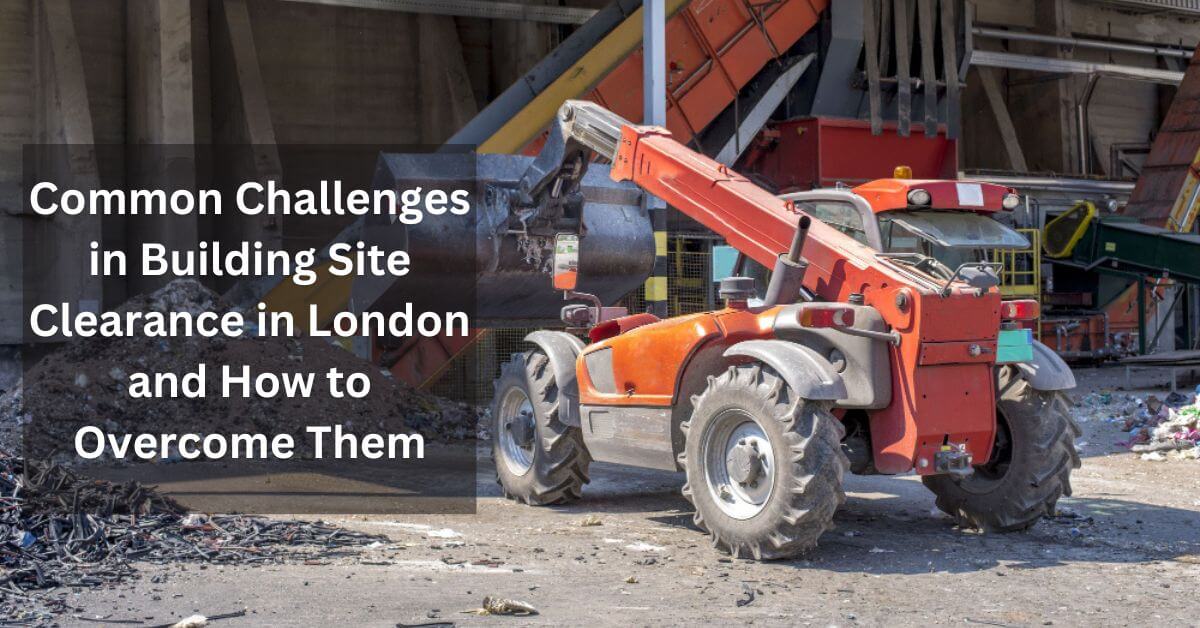Building site clearance is a crucial step in the construction process, but it often comes with its fair share of challenges, especially in a bustling city like London. From logistical hurdles to environmental considerations, navigating these obstacles requires careful planning and expertise. In this blog post, we’ll explore some common challenges in building site clearance in London and discuss strategies for overcoming them.
1. Limited Space Availability
Challenge: London is known for its densely populated urban areas, which can pose challenges in terms of finding adequate space for storage and equipment during site clearance.
Solution: Efficiently utilise available space by implementing strategic storage solutions, such as stacking materials vertically or utilising temporary storage facilities nearby. Prioritise compact equipment and machinery to minimise space requirements.
2. Traffic and Access Restrictions
Challenge: London’s congested streets and narrow roads can make it challenging to transport equipment and materials to and from the building site, leading to delays and logistical complications.
Solution: Coordinate with local authorities to obtain permits for road closures or temporary traffic diversions during critical phases of site clearance. Utilise smaller vehicles and equipment that are better suited for navigating narrow streets and restricted access areas.
3. Environmental Regulations
Challenge: London has stringent environmental regulations in place to protect its diverse ecosystem, which can complicate the disposal of construction waste and hazardous materials generated during site clearance.
Solution: Partner with reputable waste management companies that specialise in environmentally friendly disposal methods, such as recycling and proper disposal of hazardous materials. Implement waste segregation practices on-site to minimise the environmental impact of construction activities.
4. Unforeseen Underground Utilities
Challenge: London’s underground infrastructure, including gas pipes, water mains, and electrical cables, presents a risk of accidental damage during excavation and site clearance activities.
Solution: Conduct thorough surveys and utility mapping prior to commencement of site clearance to identify the location of underground utilities. Implement safe digging practices, such as hand excavation or hydro excavation, in areas where underground utilities are present to minimise the risk of damage.
5. Community Relations and Noise Pollution
Challenge: Construction activities, including site clearance, can disrupt nearby residents and businesses, leading to complaints and strained community relations.
Solution: Communicate proactively with local residents and businesses to inform them of upcoming site clearance activities and any potential disruptions. Implement noise mitigation measures, such as using quieter equipment or scheduling noisy activities during off-peak hours, to minimise disturbances to the surrounding community.
Conclusion
While building site clearance in London may present its fair share of challenges, proactive planning and effective strategies can help overcome these obstacles and ensure successful project outcomes. By partnering with experienced professionals and adopting best practices, construction companies can navigate the complexities of site clearance in London while minimising disruptions and environmental impact.
At Ultimate Rubbish Clearance, we specialise in providing comprehensive building site clearance services in London, tailored to meet the unique needs of each project. Contact us today to learn more about how we can help overcome the challenges of building site clearance and ensure the success of your construction project.






